Venice is an incredible city that is one of those “bucket list” places to visit. The Floating City as it is often referred to was formed around the sixth century as the Roman Empire’s power base was diminishing and attacks from the Lombards and Huns caused the people to form the defensive stronghold that became Venice, protected from easy attack by the lagoon that separated it from the mainland. The first Doge of Venice (most senior elected magistrate, elected for life) was elected around 700 AD and a continuous rule of Doge’s lasted for the next 1,000 years.
The entire city of Venice is a World Heritage Site and although in 1500 it was one of the most populous cities in the world by the end of WWII the population was 175,000 and in 2010 the population dipped below 60,000 which is less than the average number of tourists who visit the island city every day. The declining population is likely due to the very high cost of living, ironically created by the volume of tourists, causing many native Venetians to relocate to the mainland.
Arriving in Venice by car, you cross via a bridge/causeway, continue past the docks where the cruise ships rest and arrive at a multi-level parking garage where you gladly leave your car, grab your luggage, and head for the entrance of the Grand Canal where any manner of water transportation awaits. We chose the Vaporetto, which can be thought of as a water bus. This pic below shows the first Vaporetto stop at the mouth of the Grand Canal with the parking garage in the back ground.
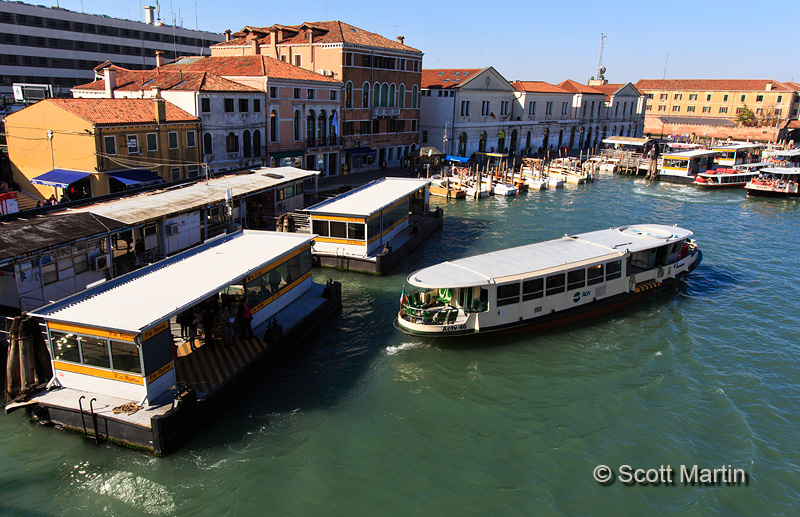
The image above was taken from the apex of the Calatrava Bridge, which is pictured below. This bridge is one of only four that span the Grand Canal and was completed in 2008 making it the newest bridge in Venice. The Calatrava Bridge is a bit controversial in that it is a stylistically modern design, constructed of steel and glass seems esthetically disconnected from rest of the city, however it is the last ‘modern’ sight you will see until returning to your car.
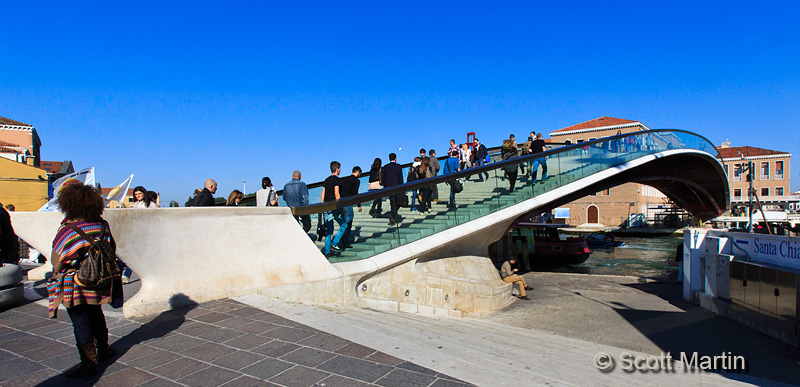
Calatrava Bridge
From the same vantage point atop the bridge but looking down the canal you get your first feel of Venice.
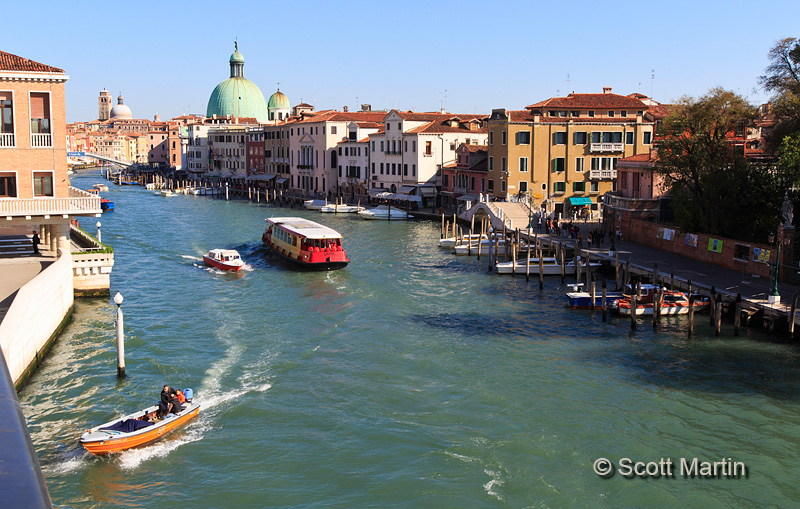
.
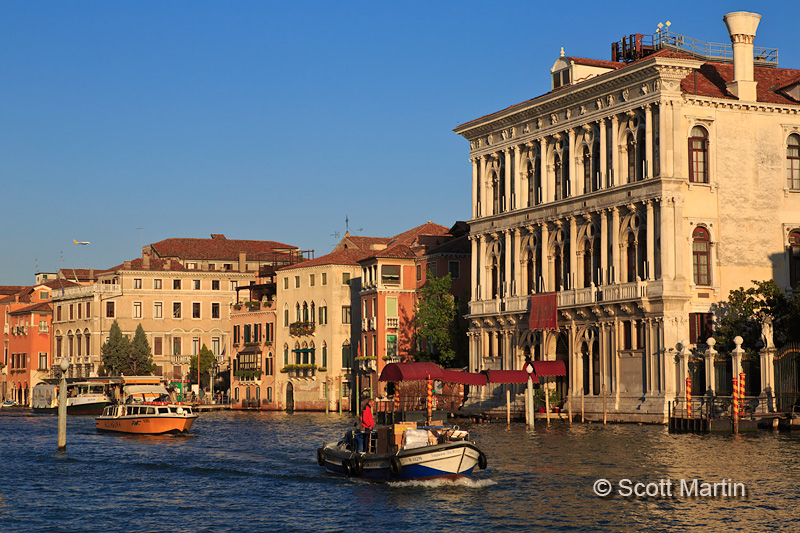
.
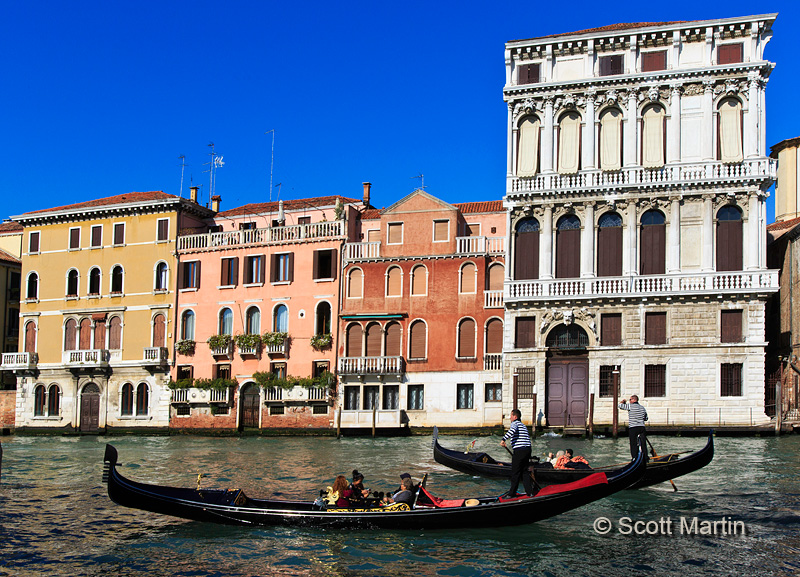
Although the Calatrava Bridge is the youngest and most controversial of the four bridges that span the Grand Canal, the Rialto Bridge is the oldest,most famous and most photographed of the quartet. The first iteration of what is now the Rialto Bridge was a pontoon bridge constructed in 1181 and replaced with a timber structure in 1255. The present stone version was completed in 1591. The Rialto Bridge and the gondolas that ply the waters beneath it are two of the most iconic fixtures of Venice. Trying to include both effectively in the same frame was a bit of a challenge but I hope we succeeded.
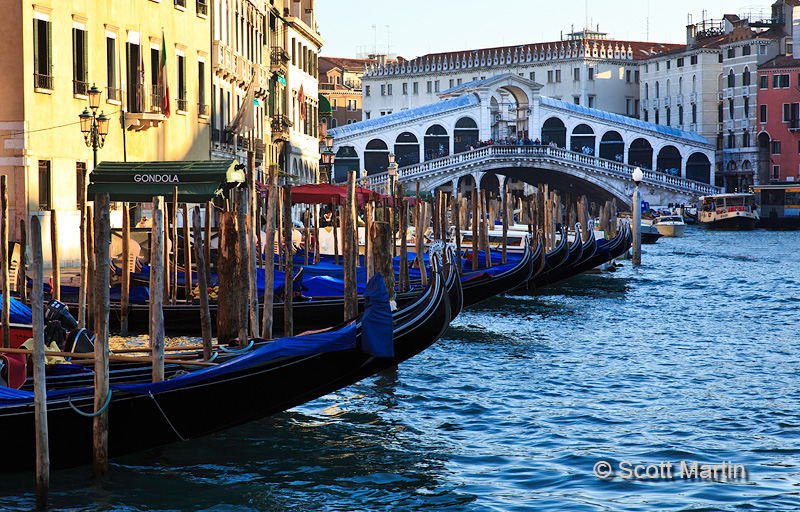
.
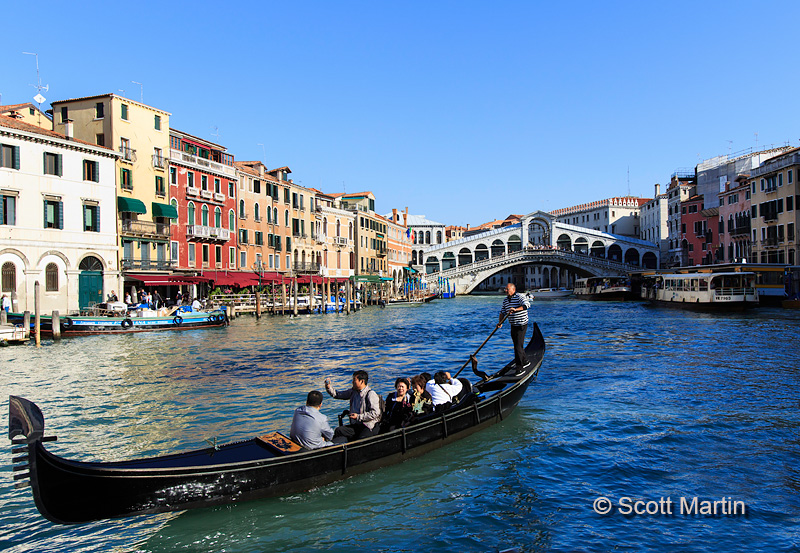
There are about 450 Gondoliers in Venice and based on tradition, you are born a gondolier in that a gondolier’s training and licence is passed from generation to generation, typically from father to son, however the first female gondolier in over 900 years was licensed in 2010. To be a gondolier in Venice makes one part of a proud and revered profession which I believe is captured in this next image.
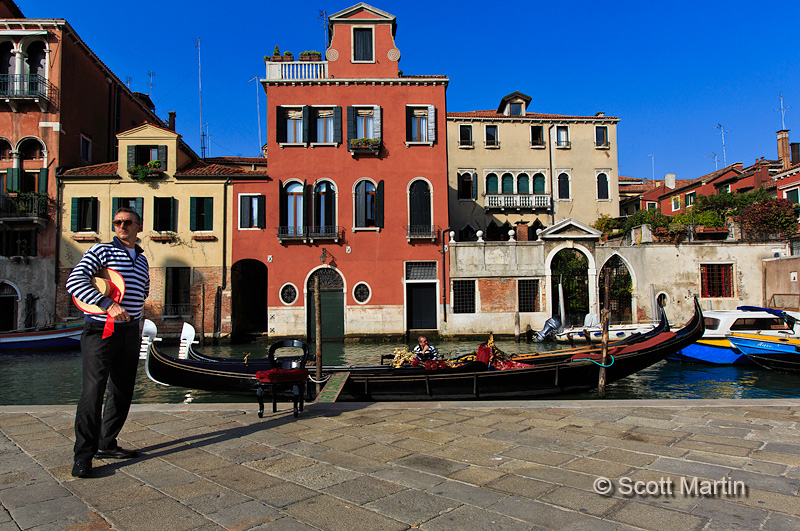
There are many quaint boutique type hotels in Venice and staying in the city adds to the charm of visiting Venice. A good example of this type of hotel is the one we stayed in, which began life as a fifteenth century palace and I would highly recommend. In fact, click here to visit their website.
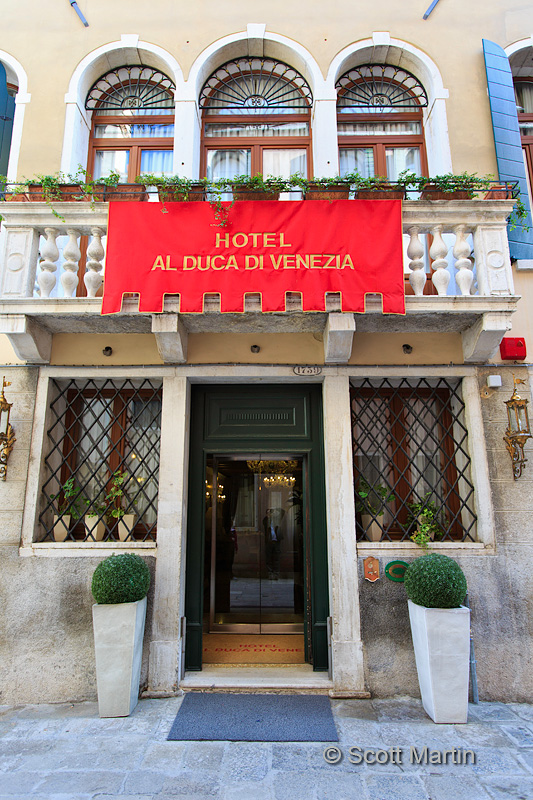
There are also hotels on a much grander scale. This angelic marble statue marks the stairway leading to the upper floor drawing room of one of Venice’s more spectacular hotels.
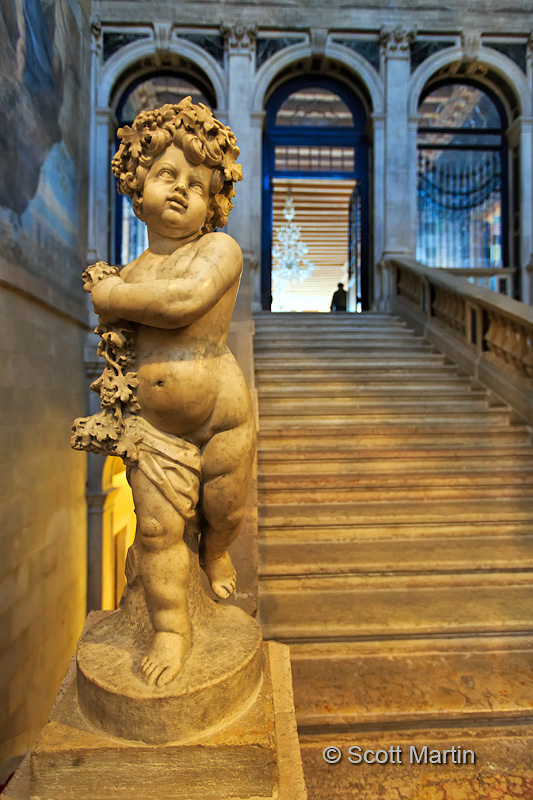
.
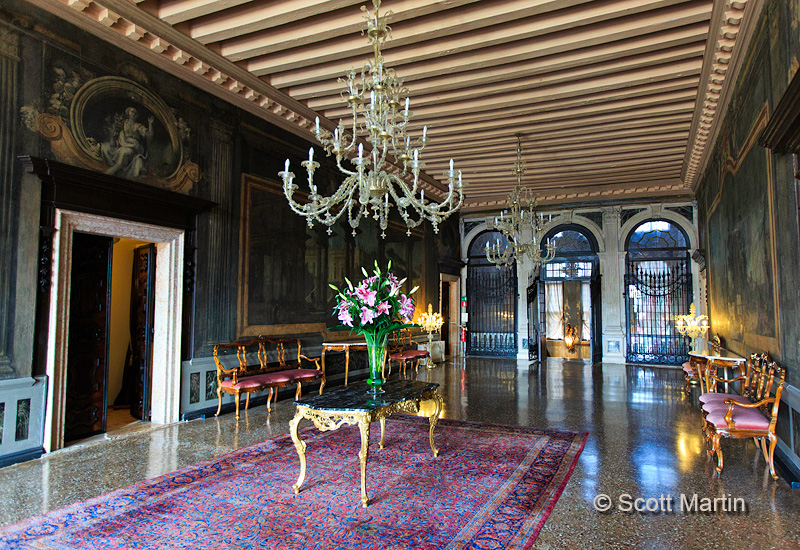
Perhaps the best known landmark of Venice is the Piazza San Marco, or as Napoleon referred to it, the drawing room of Europe. The vast expanse of the piazza can easily accomodate tens of thousands of people and it is certainly the social centre of the city.
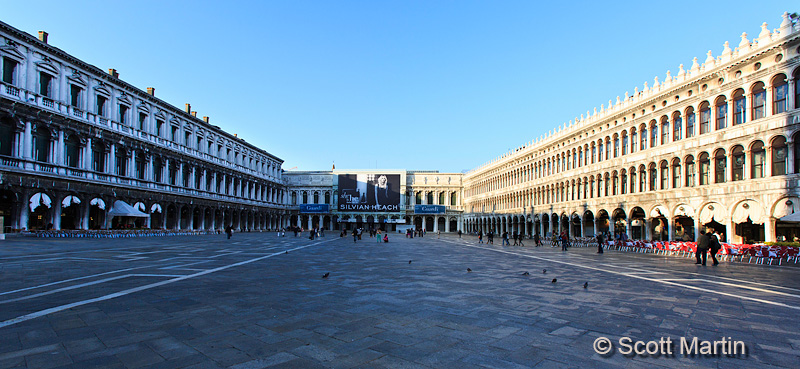
St. Mark’s Basilica dominates the east end of the Piazza San Marco while its campanile (a stand alone bell tower associated with a church) rises proudly from the piazza.
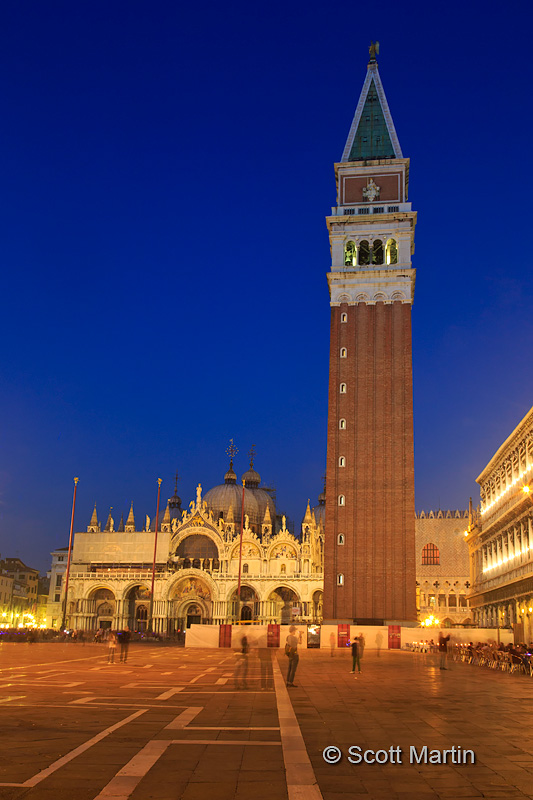
At the south east end of the piazza is another smaller area known as the Piazzetta di San Marco which runs between the Piazza and the lagoon and is bounded by the Marciana Library and Archaeological Museum on one side and Doge’s Palace on the other.
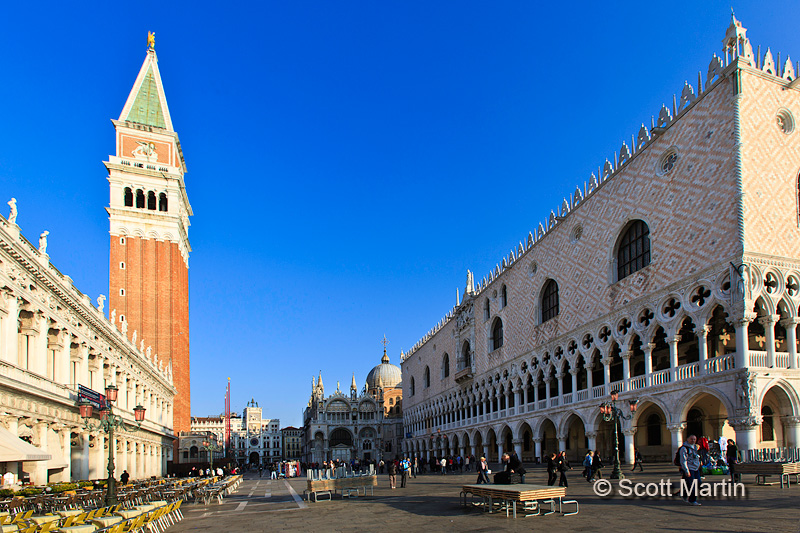
The objects that look like picnic tables in the fore ground are actually stacked portable walkways that are found throughout the public walkways of Venice. When needed they are separated and lined up end to end allowing pedestrians to stay dry and walk around the city when it is flooded which happens approximately one hundred days annually.
The Library, Archaeological Museum and Column of St. Theodore, one of the two patron saints of Venice.
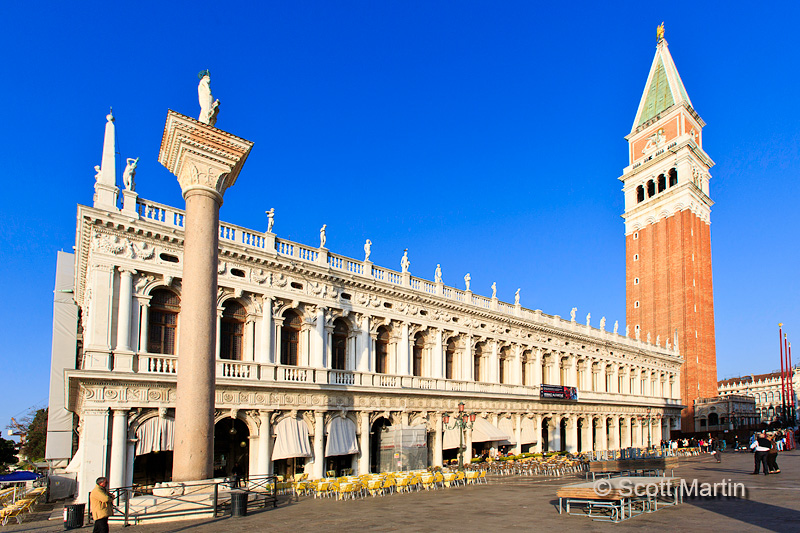
The Piazzetta taken from the lagoon with Doge’s Palace on the right side of the frame.
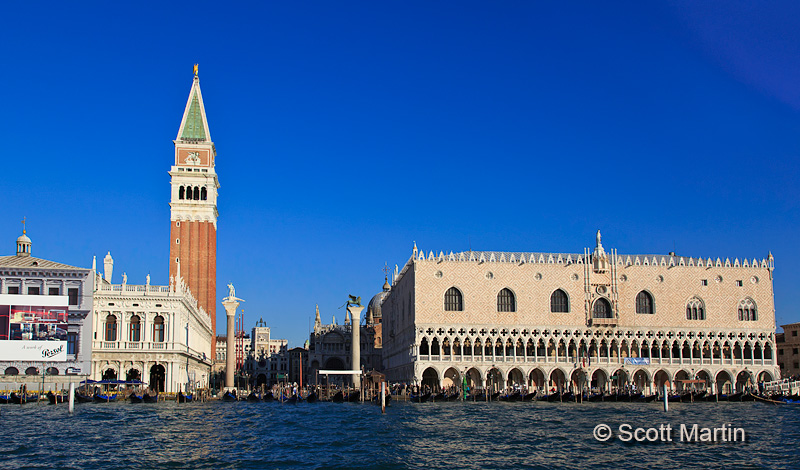
Next to Doge’s Palace, separated by a canal, is the New Prison. The famous Bridge of Sighs was built in 1614 to connect the two buildings. The bridge is completely enclosed with only small grated openings that allowed prisoners, freshly convicted by the magistrates in the palace, to catch their last view of freedom looking out through the grates to see the lagoon and the island of San Giorgio Maggiore as they were being led to the prison. The sighs they would utter gave the bridge its name.
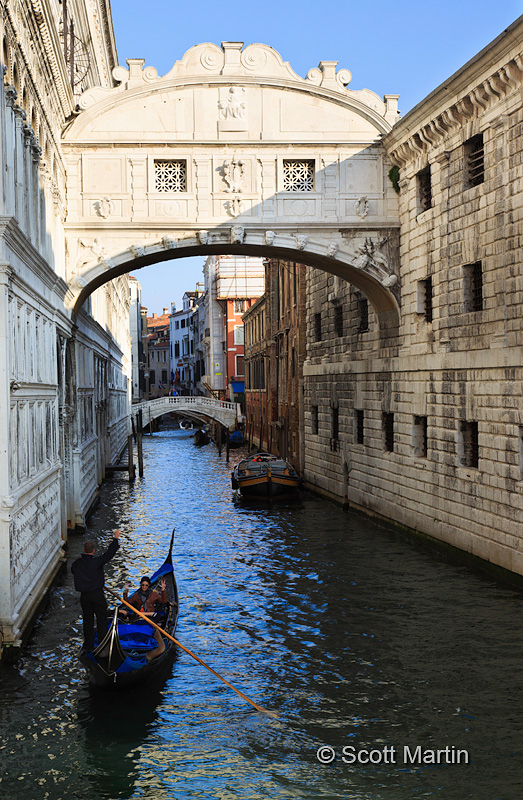
In this next twilight image it is interesting to note the stark differences in architectural style of the palace on the left and the prison on the right.
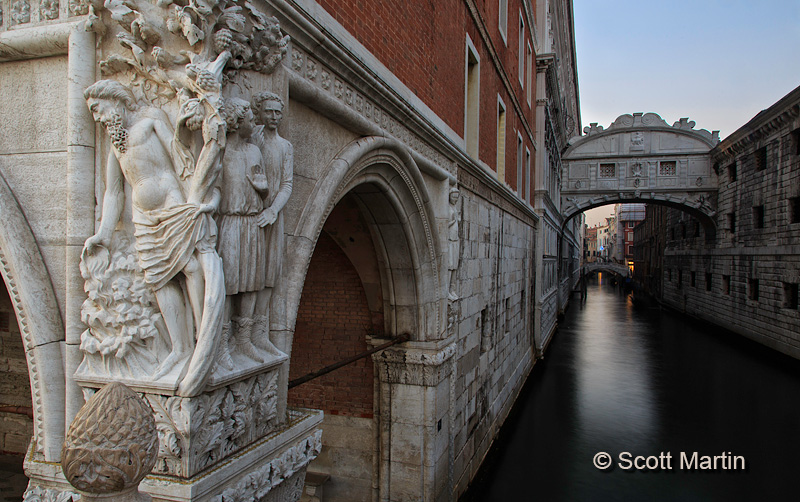
Venetians typically do not have freezers in their homes and rely on fresh food daily which is probably a good idea that we should all emulate. Markets are found throughout Venice and greatly add to the charm of the city.
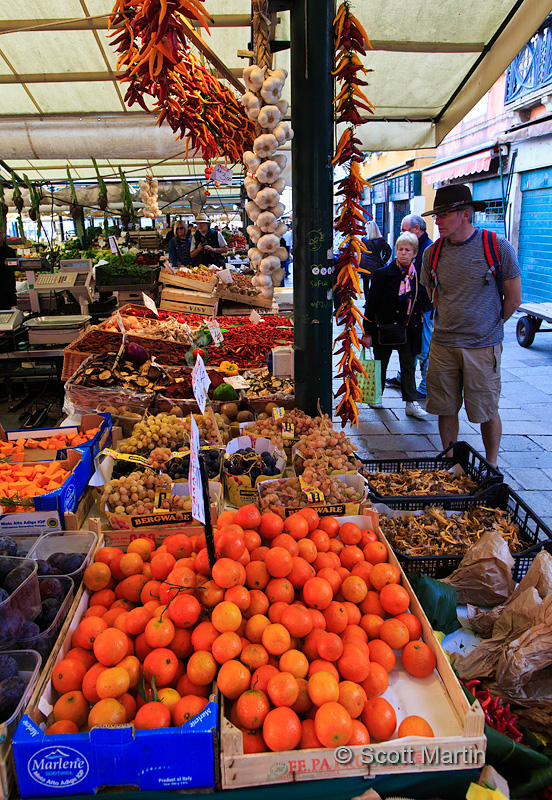
I trust you have enjoyed this more travelogue type view of Venice and that it has given you a good sense of feel for this wonderful city. The next blog post will be a more artistic photographic tour of Venice.
To close this post, we head over to the island of San Giorgio Maggiore and to the top of the bell tower of the Church of San Giorgio Maggiore which provides the perfect vantage point for a view of Venice. While at the top of the bell tower my 24-105mm lens suffered a catastrophic failure and and this was the last time I used the lens on our vacation. I’m sure the photographers reading this will feel a little sorry about my misfortune 🙂

.
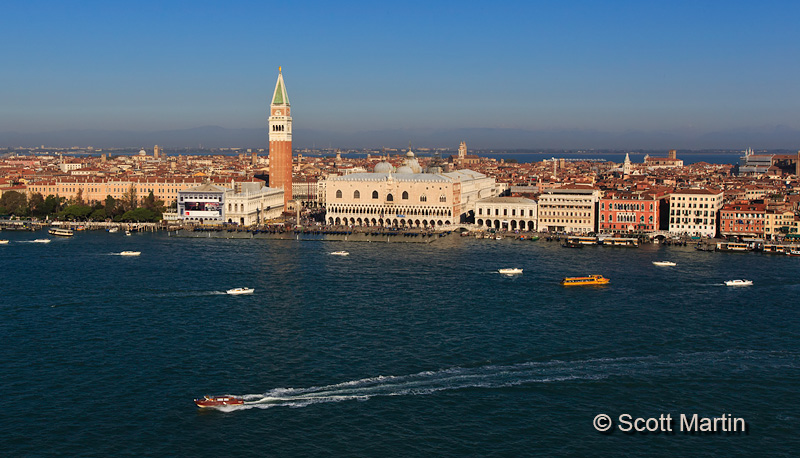


The panoramic views are absolutely stunning in my opinion.
Thanks, and San Giorgio Maggiore is the perfect vantage point to take them from!
I have to echo Rob’s comments that your images of Venice are stunning and inspiring. I do feel the pain you must have felt when the lens failed on you but it looks like you were able to recover admirably!
Thanks Arni and Venice is an inspiring place. The 24-105 is repaired and happily back in the bag…..so it’s time to plan another trip!
Well Scott, I think we are going to go. Have given the Boss forewarning that I will be applying for Long Service Leave in April. Only trouble I have is that I’m wondering if I will get anything as good as your shots!!!!!!!!
As a matter of interest, what lens did you use on the Piazza San Marco? Can’t see any distortion at all from what I am looking at. Love the Canal shot – you’ve captured the feel of your trip so well. Simply stunning photography.
Thanks Rob and I’m excited that you are planning to head to Europe in the spring. You will be glad you did!
The pic of the Piazza San Marco was taken with the 5D Mk III & 16-35. If memory serves me well I believe you have that combination in your gear collection. The full frame body is really nice for travel photography.
You are right Scott. That combo will do very well. Think I will also take the tse 17 as well
The Tilt Shift lens, especially the 17mm will be perfect for the narrow streets of Venice Rob. The TS-E 24 is on my ‘most wanted’ lens list!